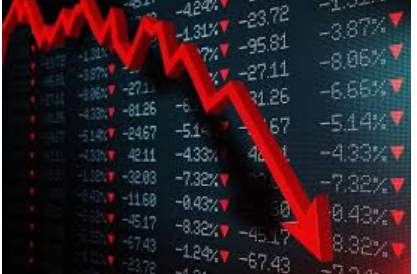Morgan Stanley kommer med klare formaninger til investorerne: Nedturen under pandemien og det efterfølgende opsving er sket usædvanlig hurtigt, og dette har sammen med nul-rentepolitikken og pengeudpumpningen skubbet aktierne i vejret. Men nu er festen slut. Den næste fase lyder på en stramning fra centralbankens side. Inflationen skal bremses for at undgå en virkning på midtvejsvalget i USA næste år, og det betyder en højere rente. De lave renter er ganske enkelt uforenelige med høj vækst på omkring 10 pct. og høj indtjening i virksomhederne. Derfor står vi over for højere renter, og det rammer aktierne, mener Morgan Stanley. Derfor skal investorerne nu være konservative og forsigtige i deres valg. Banken anbefaler sundhedssektoren og dagligvaresektoren.
Uddrag fra Morgan Stanley:
The Last Phase of Mid-Cycle
U.S. equity markets have transitioned through three of four typical changes associated with a mid-cycle transition. But the next, final phase—Fed tightening—may have the most impact.
COVID-19 was not only the steepest recession on record, but it was also the shortest. Furthermore, the V-shaped recovery and progression has been extraordinarily fast. The combination of record monetary and fiscal stimulus, effective vaccines, and a digitized economy has orchestrated a return to new highs in economic output and earnings in record time.
This is also why stock markets have rebounded to new all-time highs in record time, too. In short, everything is happening faster than normal during this recession and recovery, and that’s exactly why we made the mid-cycle transition call back in March.
All that means is that we have reached the peak rate of change in the accelerative part of the recovery sooner than normal. Typically, it takes about a year after the recession ends to reach that point of the cycle. Back in March, most were operating under the assumption that we were still in a recession since the economy had not yet reopened. However, our analysis suggested what the NBER confirmed last week: that the recovery was much more advanced, and markets were likely to discount the next stage of the cycle.
The mid-cycle transition is usually characterized by several predictable changes that could be helpful to investors. First, the rate of change on economic and earnings growth peaks. Second, equity markets begin to narrow as fewer stocks can keep up with the torrid pace of the initial recovery. Third, leadership moves away from those sectors that do their best during the early stages of recovery. These include homebuilders, semiconductors, retailers and transports. Finally, the Fed begins to tighten monetary policy and interest rates rise considerably, which weighs on equity valuations.
Since March, we have witnessed the first three changes. The peak rate of change and growth is now behind us. The market has narrowed considerably, and leadership has moved away from cyclical sectors towards higher quality ones that typically weather this part of the cycle better.
However, the final part of the transition is still yet to come and may have a more meaningful impact on the major averages, which remain very resilient despite the deterioration in market breadth.
In our view, the primary reason for the resilience in the major U.S. equity indices is due to the continued fall in longer term interest rates, particularly real 10-year interest rates, which made a new all-time low yesterday at a negative 1.1%.
This extremely low rate doesn’t exactly jibe with an economy that is growing close to 10% year over year. And the reason is crystal clear – a Federal Reserve that is moving more slowly than normal at this stage of the recovery. The question for investors is whether this is sustainable.
We think there are a few reasons to think it’s not. First, the administration is starting to worry about inflationary impacts on the consumer. If inflation turns out to be more structural, it could negatively impact the midterm elections next year. As such, the Fed may be starting to feel the heat to at least start the tightening process. Second, the Fed itself knows the longer it waits to start, the faster it’ll have to go later, and that could lead to financial instability, or even threaten the economic recovery.
Bottom line, interest rates at current levels are not compatible with a booming economy and earnings growth. Something has to give, and the equity market is likely to discount it soon. We continue to recommend investors take a more conservative approach and favor defensive sectors like healthcare and consumer staples, while using financials as a hedge against higher rates later this year as the Fed begins its tightening process.



